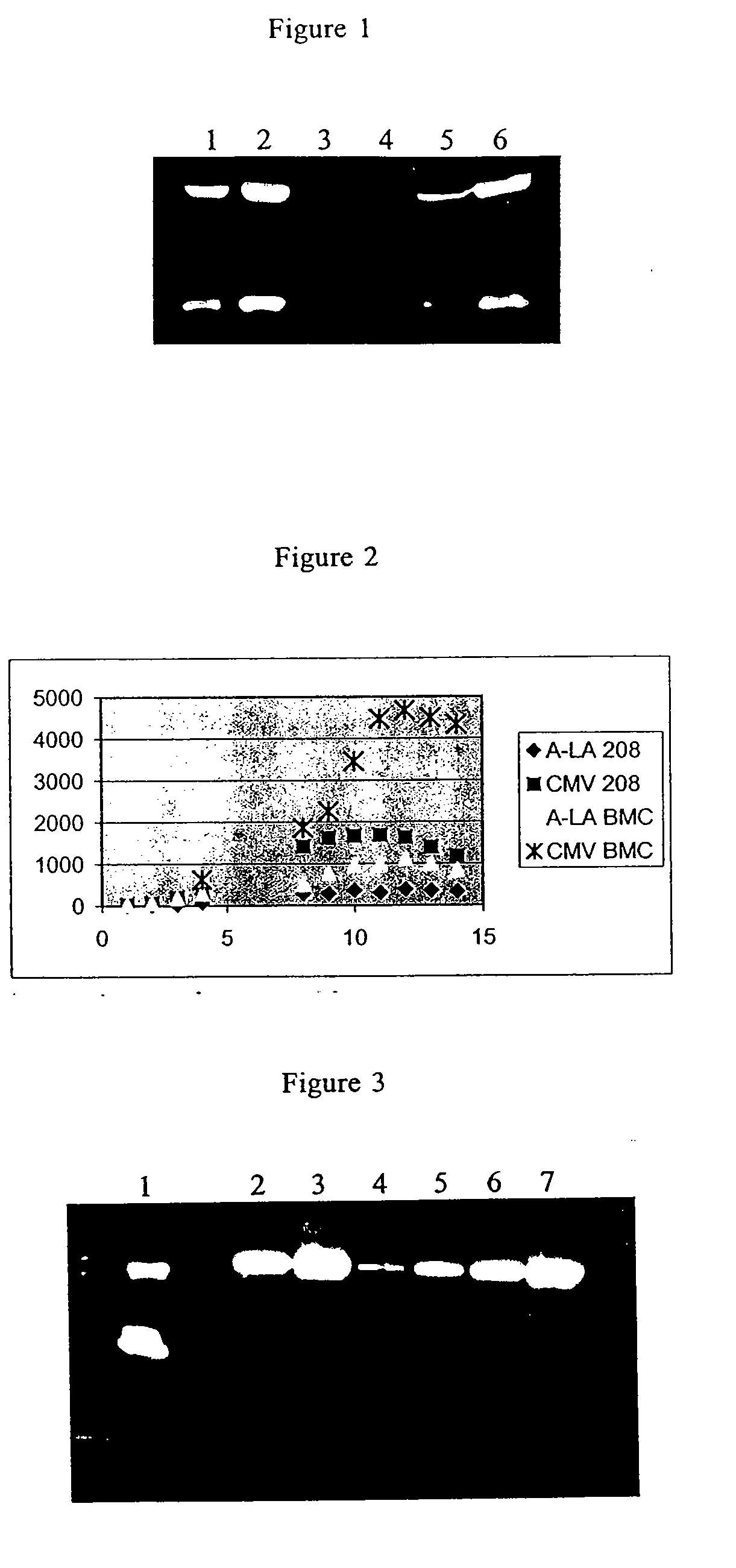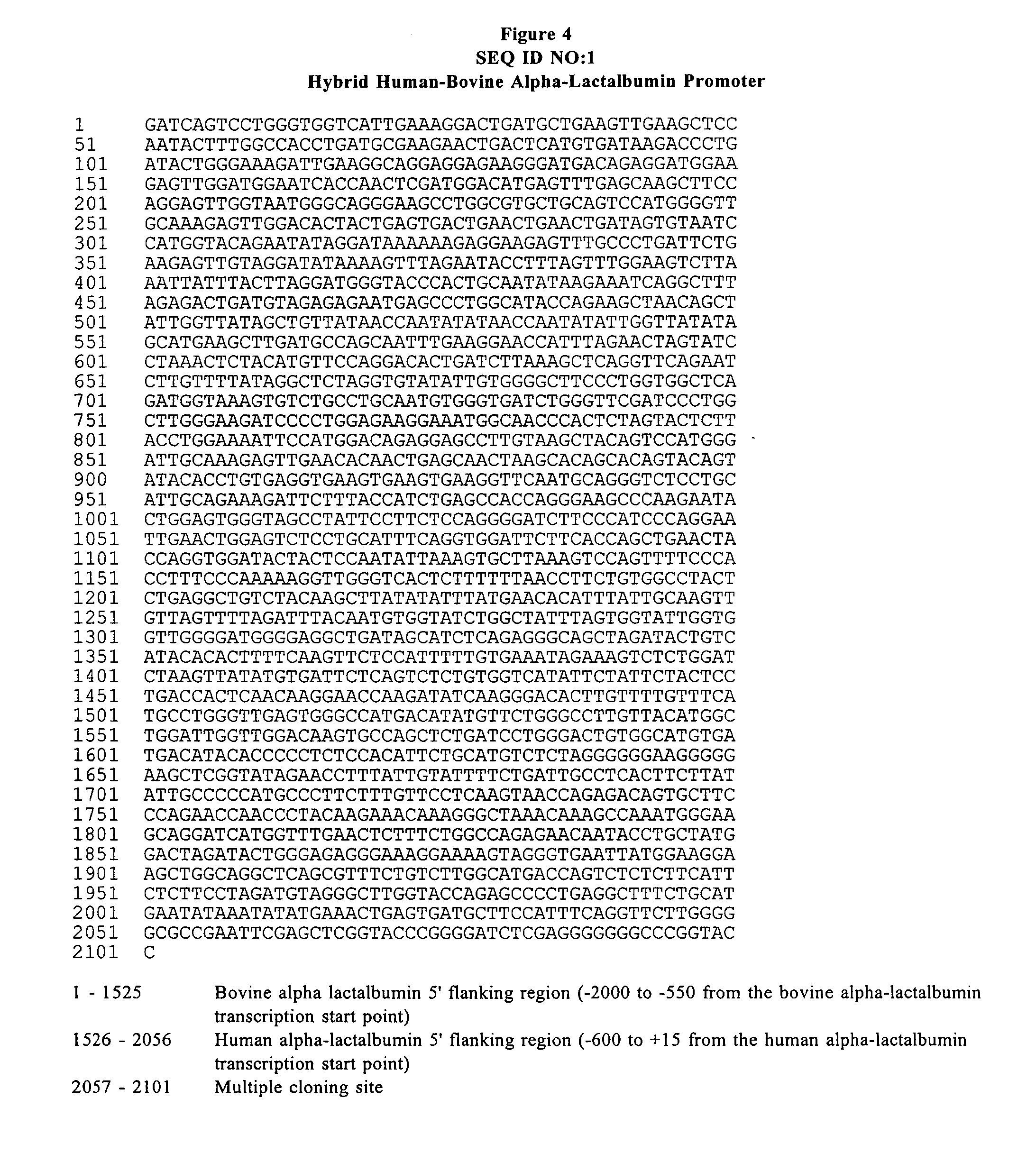Host Cells Containing Multiple Integrating Vectors
a technology of host cells and vectors, applied in the field of host cells containing multiple integrated copies of an integrating vector, can solve the problems of intrinsic instability of multiple integration of transgenes, and achieve the effect of reducing the number of integrations
- Summary
- Abstract
- Description
- Claims
- Application Information
AI Technical Summary
Benefits of technology
Problems solved by technology
Method used
Image
Examples
example 1
Vector Construction
[0203]The following Example describes the construction of vectors used in the experiments below.
A. CMV MN14
[0204]The CMV MN14 vector (SEQ ID NO:4; MN14 antibody is described in U.S. Pat. No. 5,874,540, incorporated herein by reference) comprises the following elements, arranged in 5′ to 3′ order: CMV promoter; MN14 heavy chain signal peptide, MN14 antibody heavy chain; IRES from encephalomyocarditis virus; bovine α-lactalbumin signal peptide; MN14 antibody light chain; and 3′ MoMuLV LTR. In addition to sequences described in SEQ ID NO: 4, the CMV MN14 vector further comprises a 5′ MoMuLV LTR, a MoMuLV extended viral packaging signal, and a neomycin phosphotransferase gene (these additional elements are provided in SEQ ID NO:7; the 5′ LTR is derived from Moloney Murine Sarcoma Virus in each of the constructs described herein, but is converted to the MoMuLV 5′ LTR when integrated).
[0205]This construct uses the 5′ MoMuLV LTR to control production of the neomycin phos...
example 2
Generation of Cell Lines Stably Expressing the MoMLV gag and pol Proteins
[0265]Examples 2-5 describe the production of pseudotyped retroviral vectors. These methods are generally applicable to the production of the vectors described above. The expression of the fusogenic VSV G protein on the surface of cells results in syncytium formation and cell death. Therefore, in order to produce retroviral particles containing the VSV G protein as the membrane-associated protein a two-step approach was taken. First, stable cell lines expressing the gag and pol proteins from MoMLV at high levels were generated (e.g., 293GPSD cells). The stable cell line which expresses the gag and pol proteins produces noninfectious viral particles lacking a membrane-associated protein (e.g., an envelope protein). The stable cell line was then co-transfected, using the calcium phosphate precipitation, with VSV-G and gene of interest plasmid DNAs. The pseudotyped vector generated was used to infect 293GPSD cells...
example 3
Preparation of Pseudotyped Retroviral Vectors Bearing the G Glycoprotein of VSV
[0268]In order to produce VSV G protein pseudotyped retrovirus the following steps were taken. The 293GPSD cell line was co-transfected with VSV-G plasmid and DNA plasmid of interest. This co-transfection generates the infectious particles used to infect 293GPSD cells to generate the packaging cell lines. This Example describes the production of pseudotyped LNBOTDC virus. This general method may be used to produce any of the vectors described in Example 1.
[0269]a) Cell Lines and Plasmids
[0270]The packaging cell line, 293GPSD was grown in alpha-MEM-high glucose medium containing 10% FCS The titer of the pseudo-typed virus may be determined using either 208F cells (Quade, Virol. 98:461 [1979]) or NIH / 3T3 cells (ATCC CRL 1658); 208F and NIH / 3T3 cells are grown in DMEM-high glucose medium containing 10% CS.
[0271]The plasmid LNBOTDC contains the gene encoding BOTD under the transcriptional control of cytomegal...
PUM
 Login to View More
Login to View More Abstract
Description
Claims
Application Information
 Login to View More
Login to View More - R&D
- Intellectual Property
- Life Sciences
- Materials
- Tech Scout
- Unparalleled Data Quality
- Higher Quality Content
- 60% Fewer Hallucinations
Browse by: Latest US Patents, China's latest patents, Technical Efficacy Thesaurus, Application Domain, Technology Topic, Popular Technical Reports.
© 2025 PatSnap. All rights reserved.Legal|Privacy policy|Modern Slavery Act Transparency Statement|Sitemap|About US| Contact US: help@patsnap.com



